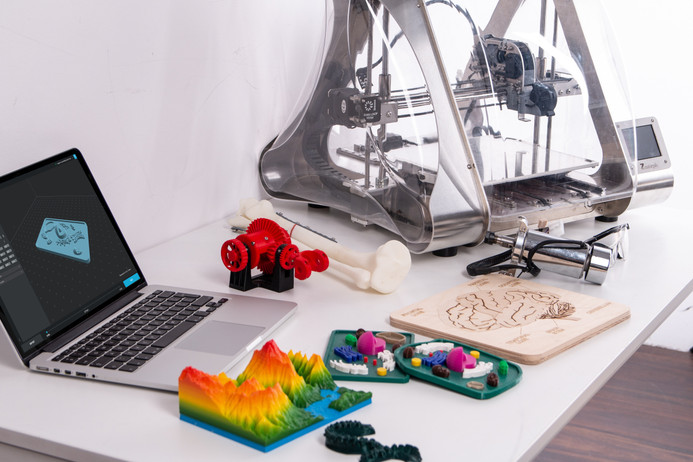Explore how 3D printing is revolutionizing laptop and PC hardware innovation. Discover the benefits of customization, rapid prototyping, cost reduction, and the use of innovative materials. Learn how this technology is shaping the future of computing by enabling on-demand production and advanced designs.
In recent years 3D printing has emerged as transformative technology in various fields. It has revolutionized manufacturing processes. It enables new levels of creativity and efficiency. In realm of laptop and PC hardware, 3D printing has brought about significant innovations. This offers new opportunities for customization performance enhancement and cost reduction. This article delves into impact of 3D printing on laptop and PC hardware innovation. It explores how this technology is shaping future of computing
Customization and Personalization
One of significant impacts of 3D printing on laptop and PC hardware is ability to offer unparalleled customization and personalization options. Traditional manufacturing processes often involve standardized components that may not fully meet individual preferences or specific requirements. However 3D printing allows for creation of bespoke hardware components. These components are tailored to unique needs of users.
For instance, enthusiasts and gamers can design and produce custom cases. They can create cooling solutions and even internal components that reflect their personal style or optimize system's performance. This level of customization extends beyond aesthetics. It enables users to address specific cooling challenges. Users can integrate unique features that are not available with off-the-shelf products. As a result 3D printing fosters a more personalized and engaging experience for users. It enhances overall satisfaction with their hardware.
Prototyping and Rapid Development
The iterative nature of hardware development often requires extensive prototyping to refine designs and test performance Traditional prototyping methods can be time-consuming and costly particularly for complex or highly specialized components 3D printing, however offers a faster and more cost-effective solution for creating prototypes and testing new ideas
Designers and engineers can quickly produce and evaluate multiple iterations of hardware components They can identify and address design flaws more efficiently This rapid development cycle accelerates innovation process allowing companies to bring new products to market more swiftly Additionally, ability to produce prototypes in-house reduces reliance on external manufacturing services further streamlining development process
Cost Reduction and Accessibility
3D printing has potential to significantly reduce cost of manufacturing hardware components. Traditional manufacturing methods often involve expensive tooling and setup costs. This is particularly true for low-volume production runs. In contrast 3D printing requires minimal setup. It can produce components on demand which lowers production costs and reduces waste.
For smaller companies and startups, this cost reduction can be particularly advantageous. It lowers barrier to entry for developing and bringing new hardware products to market. By leveraging 3D printing technology these companies can compete more effectively with established players in industry. This fosters innovation and diversity in hardware market.
Innovative Materials and Designs
The evolution of 3D printing technology has also led to development of innovative materials that enhance performance and functionality of laptop and PC hardware Advanced 3D printing materials such as high-strength polymers metal alloys and composite materials offer improved durability thermal management and overall performance.
Designers can experiment with complex geometries and structures that were previously impractical. It was impossible with traditional manufacturing methods. This flexibility enables creation of lightweight yet robust components optimized cooling solutions and other performance-enhancing features. By pushing boundaries of design and material science 3D printing is driving hardware innovation and expanding possibilities for future developments
On-Demand Production and Spare Parts
Another significant advantage of 3D printing is ability to produce hardware components on demand. This capability is valuable for producing spare parts and replacements for older or discontinued hardware. Instead of relying on dwindling stock users can print replacements as needed. This extends lifespan of their devices and reduces electronic waste.
For manufacturers, on-demand production means ability to respond more quickly to changing market demands and supply chain disruptions. By maintaining digital inventories of hardware designs companies can rapidly produce components. This addresses unforeseen needs or shortages and enhances agility and responsiveness.
Challenges and Future Prospects
Despite its numerous benefits 3D printing in hardware development is not without challenges. Technology still faces limitations in terms of speed, material diversity and precision. These factors can impact quality and performance of printed components. Additionally integrating 3D-printed parts with traditional manufacturing processes requires careful consideration. This is crucial to ensure compatibility and reliability.
Looking forward, ongoing advancements in 3D printing technology hold promise of addressing these challenges. They could further enhance impact on laptop and PC hardware innovation. Continued research and development in areas such as high-speed printing advanced materials and multi-material printing will likely expand capabilities and applications of 3D printing in hardware development.
In conclusion 3D printing has significantly influenced innovation landscape for laptop and PC hardware. It offers opportunities for customization, rapid prototyping cost reduction and advanced materials. As technology continues to evolve, its impact on hardware industry is expected to grow. This growth will drive further advancements and shape future of computing. By embracing potential of 3D printing manufacturers and users alike can unlock new possibilities. They can push boundaries of hardware design and functionality
